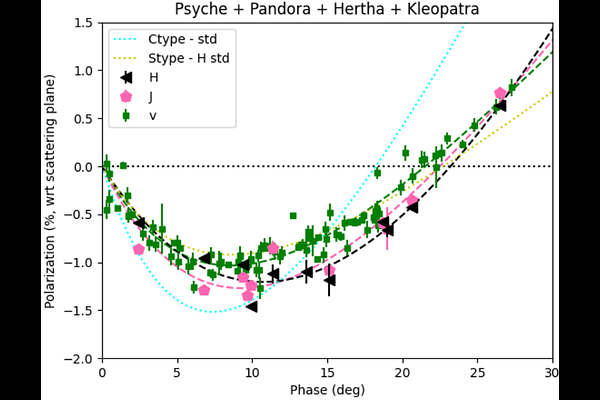The Mineralogical Connection Between M- and K-type Asteroids as Indicated by Polarimetry

The Mineralogical Connection Between M- and K-type Asteroids as Indicated by Polarimetry
Joseph R. Masiero, Yuna G. Kwon, Elena Selmi, Manaswi Kondapally
AbstractPolarimetry has the capacity to provide a unique probe of the surface properties of asteroids. Trends in polarization behavior as a function of wavelength trace asteroid regolith mineral properties that are difficult to probe without measurements in situ or on returned samples. We present recent results from our ongoing survey of near-infrared polarimetric properties of asteroids. Our data reveal a mineralogical link between asteroids in the broader M- and K- spectral classes. In particular, M-type objects (16) Psyche, (55) Pandora, (135) Hertha, and (216) Kleopatra show the same polarimetric-phase behavior as K-type objects (89) Julia, (221) Eos, and (233) Asterope from visible through near-infrared light. The near-infrared behavior for these objects is distinct from other classes observed to date, and shows a good match to the polarimetric properties of M-type asteroid (21) Lutetia from the visible to the near-infrared. The best link for these objects from laboratory polarimetric phase curve measurements is to a troilite-rich fine-grained regolith. Our observations indicate that the M- and K-type spectral classes are most likely part of a continuum, with the observed spectral differences due to heterogeneity from partial differentiation, shock darkening of the surface material, or other later evolution of the original parent population. We also provide incidental J- and H-band polarimetric observations of other Main Belt asteroids obtained during our survey.